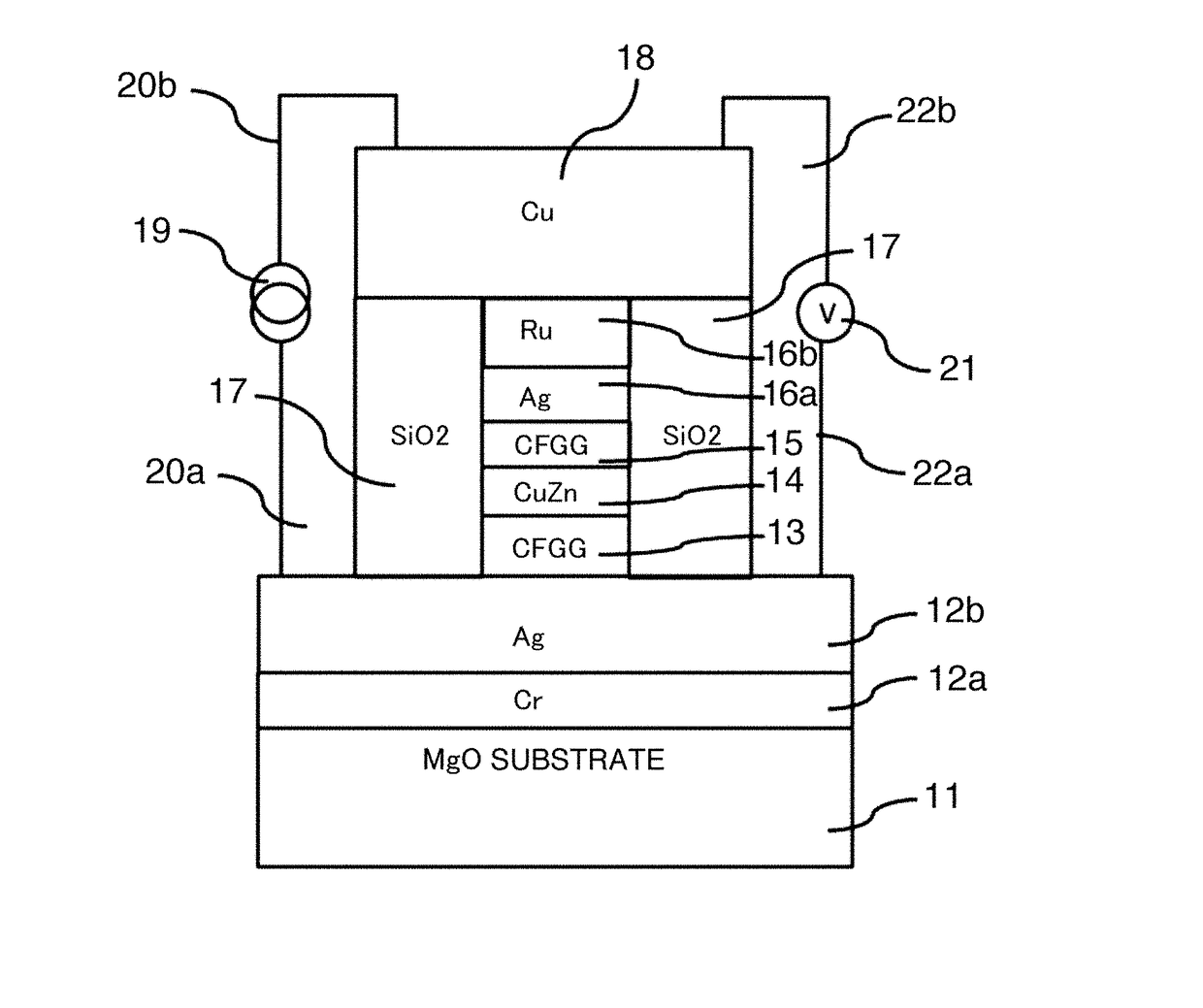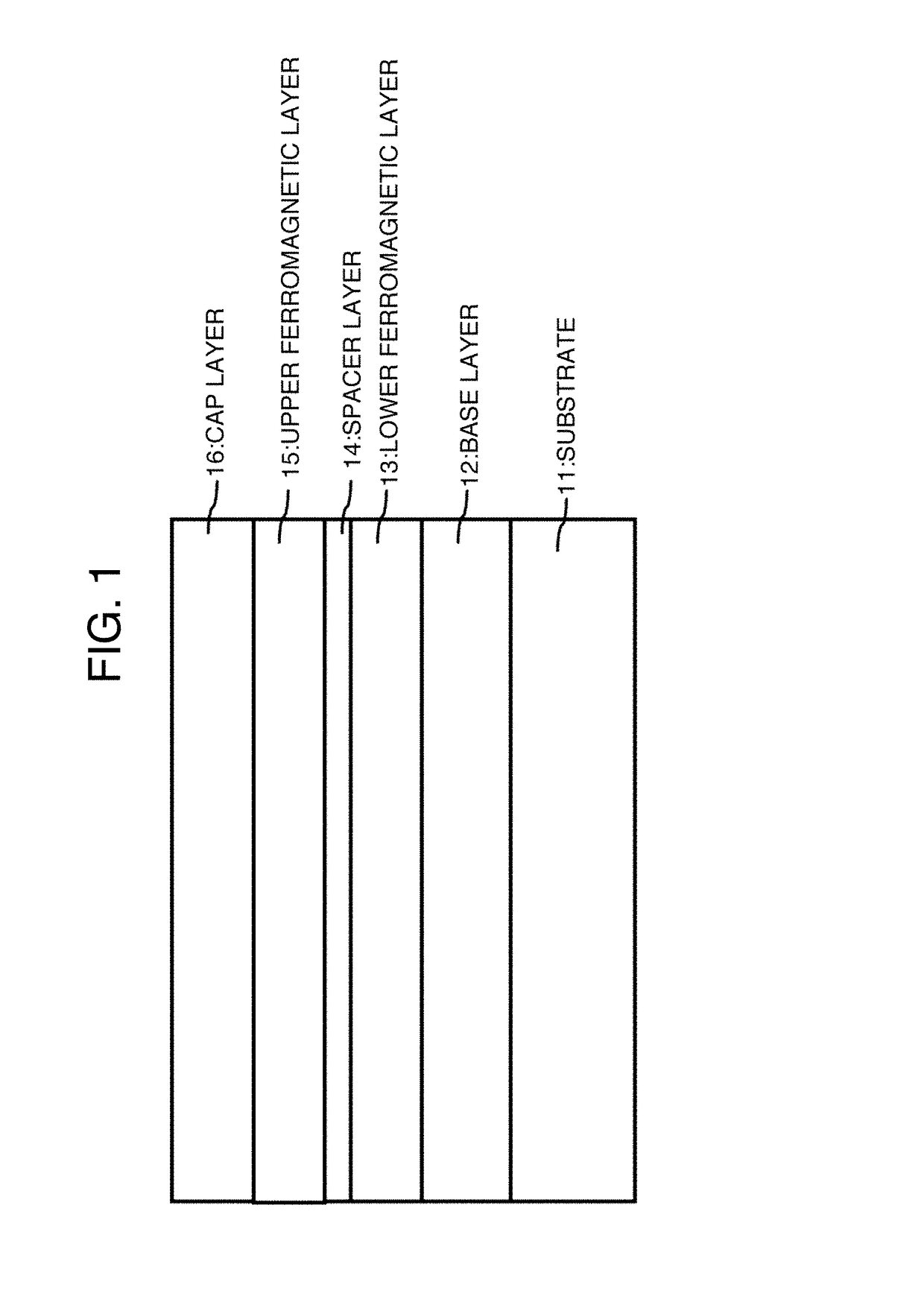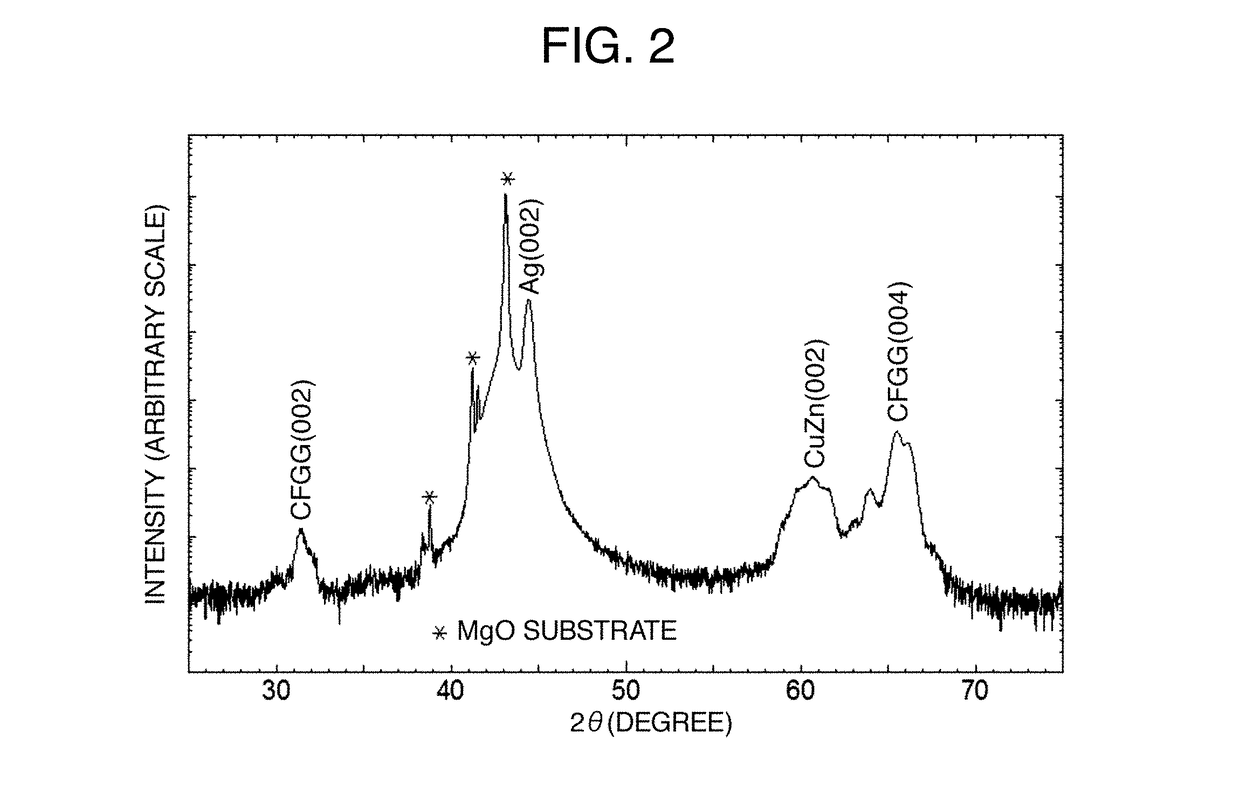Magnetoresistive element, magnetic head using magnetoresistive element, and magnetic playback device
a technology of magnetoresistance and magnetic head, which is applied in the direction of magnetic recording, instruments, data recording, etc., can solve the problem that the output of magnetoresistance predicted from theoretical calculations has not been obtained, and achieves a large change amount of magnetoresistance, high magnetoresistance ratio, and low electric resistivity
- Summary
- Abstract
- Description
- Claims
- Application Information
AI Technical Summary
Benefits of technology
Problems solved by technology
Method used
Image
Examples
example 1
[0077]FIG. 1 is a schematic cross-sectional view of a CPPGMR element according to an embodiment of the present invention. FIG. 4 is a schematic cross-sectional view of an element obtained by adding an electrode for measuring electric resistance with respect to a magnetic field to a CPPGMR element according to an embodiment of the present invention. In FIG. 4, a single crystal MgO substrate is used for the substrate 11, a product obtained by stacking Cr and Ag from the bottom is used for the base layer 12, a Heusler alloy Co2FeGa0.5Ge0.5 (CFGG) is used for each of the lower ferromagnetic layer 13 and the upper ferromagnetic layer 15, CuZn is used for the spacer layer 14, and a product obtained by stacking Ag and Ru from the bottom is used for the cap layer 16.
[0078]In the element illustrated in FIG. 1, a film was formed on an MgO substrate by a sputtering method so as to have a film configuration from the bottom of Cr(10) / Ag(100) / CFGG(10) / CuZn(5) / CFGG(10) / Ag(5) / Ru(8) in which each of...
example 2
[0084]In Example 2, a stacked structure similar to that in Example 1 is used, but Cu3Al is used as the spacer layer 14 in place of CuZn. That is, a film was formed on an MgO substrate from the bottom by a sputtering method so as to have a film configuration of Cr(10) / Ag(100) / CFGG(10) / Cu3Al(5) / CFGG(10) / Ag(5) / Ru(8). Subsequently, a crystal structure was examined by X-ray diffraction. FIG. 7 is an X-ray diffraction pattern diagram of a CPPGMR element film having the stacked configuration in Example 2. When the pattern diagram is represented by 2θ in the X-ray diffraction, three sharp peaks around 39°, 41°, and 43° due to reflection on the MgO substrate are observed. A peak at 31° should be found due to reflection in a CFGG(002) direction, but is not found because of being buried in a noise. An obtuse peak around 64° is found due to reflection in a CFGG(004) direction. A peak at 43° is found due to reflection in an Ag(002) direction, an obtuse peak around 60° is found due to reflection ...
PUM
| Property | Measurement | Unit |
|---|---|---|
| thickness | aaaaa | aaaaa |
| magnetoresistive | aaaaa | aaaaa |
| composition | aaaaa | aaaaa |
Abstract
Description
Claims
Application Information
 Login to View More
Login to View More - R&D
- Intellectual Property
- Life Sciences
- Materials
- Tech Scout
- Unparalleled Data Quality
- Higher Quality Content
- 60% Fewer Hallucinations
Browse by: Latest US Patents, China's latest patents, Technical Efficacy Thesaurus, Application Domain, Technology Topic, Popular Technical Reports.
© 2025 PatSnap. All rights reserved.Legal|Privacy policy|Modern Slavery Act Transparency Statement|Sitemap|About US| Contact US: help@patsnap.com



